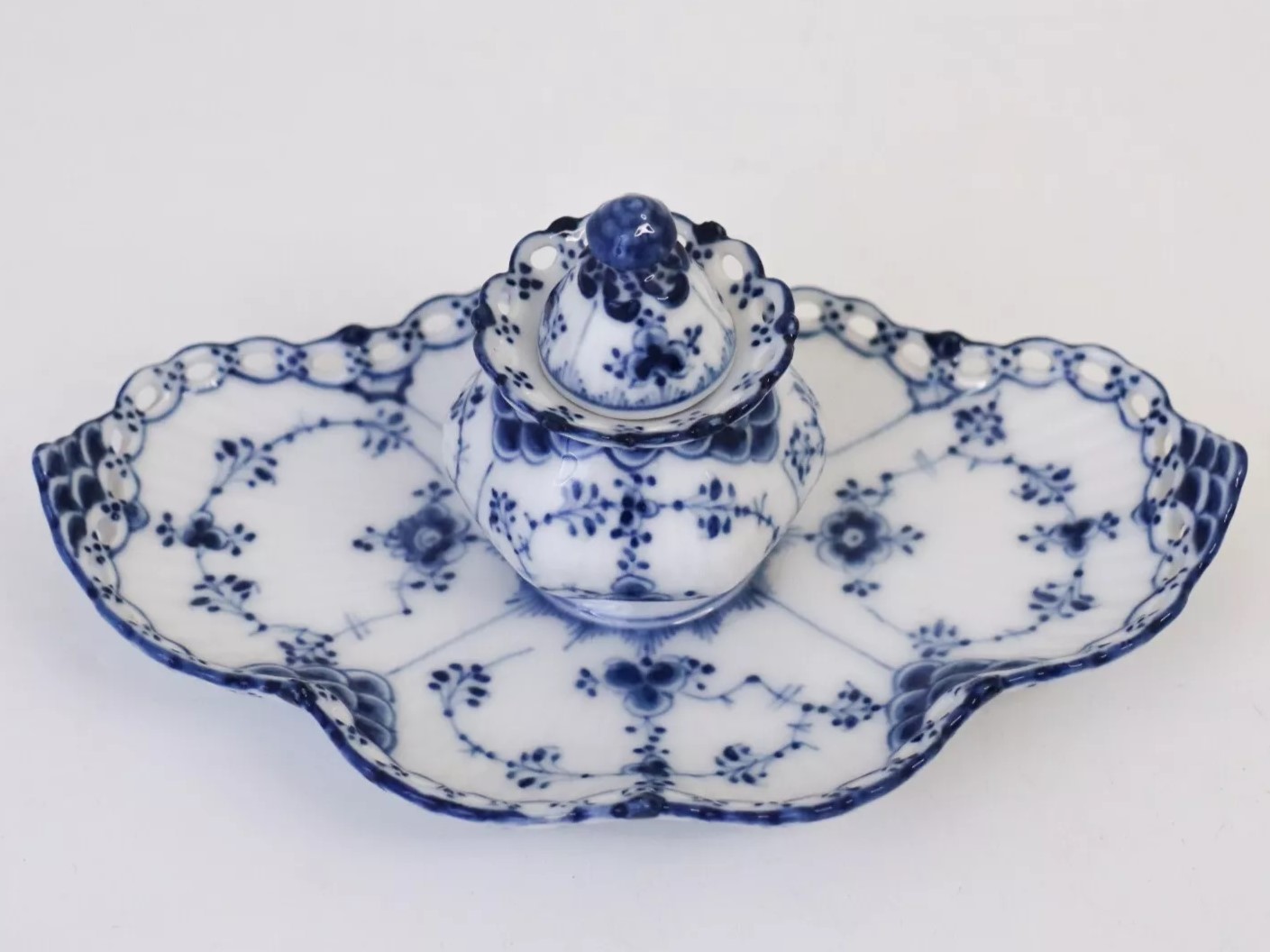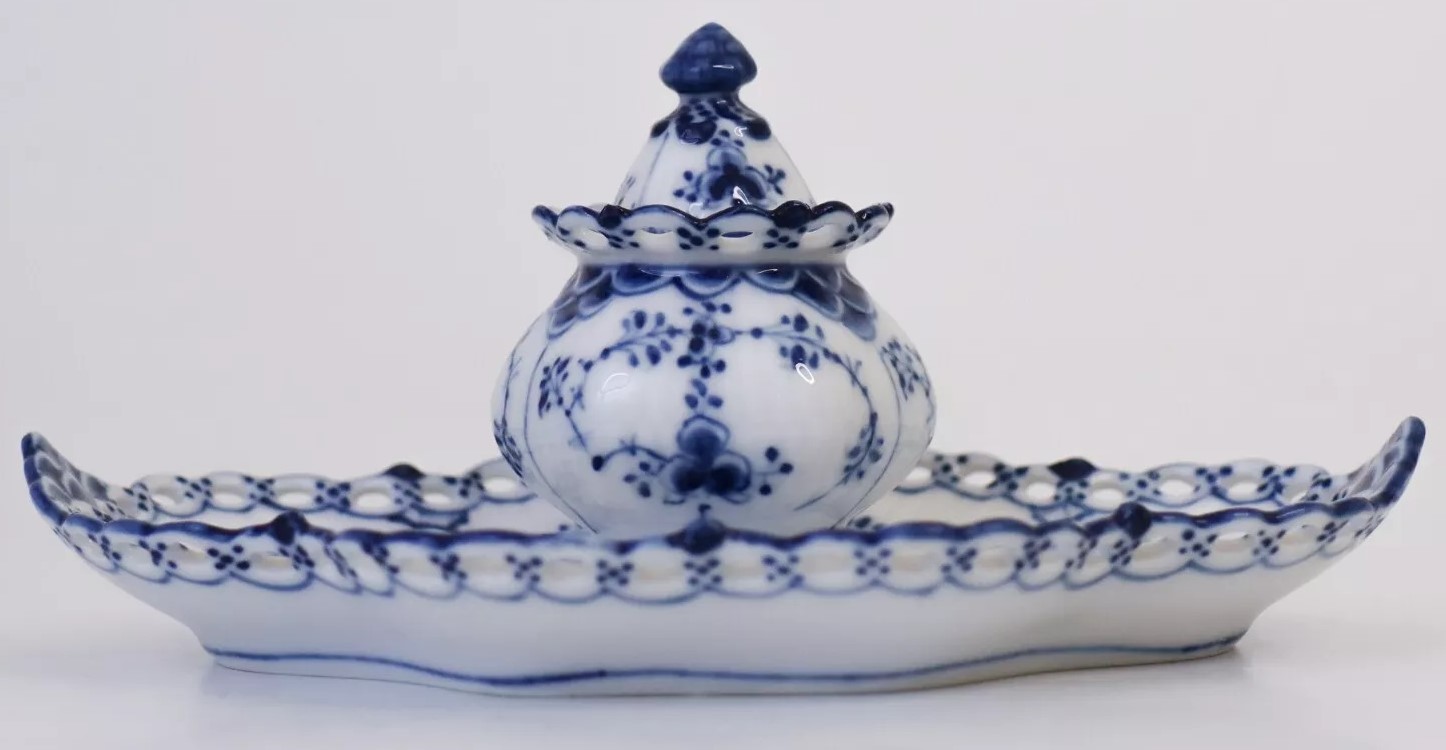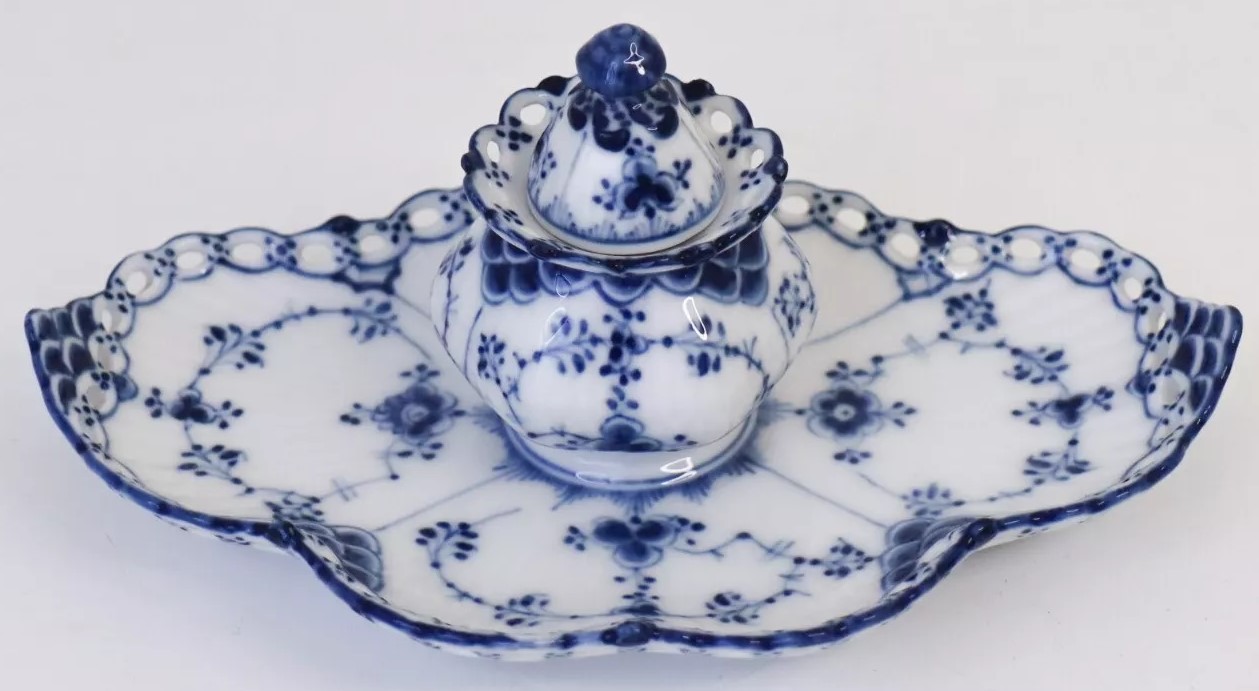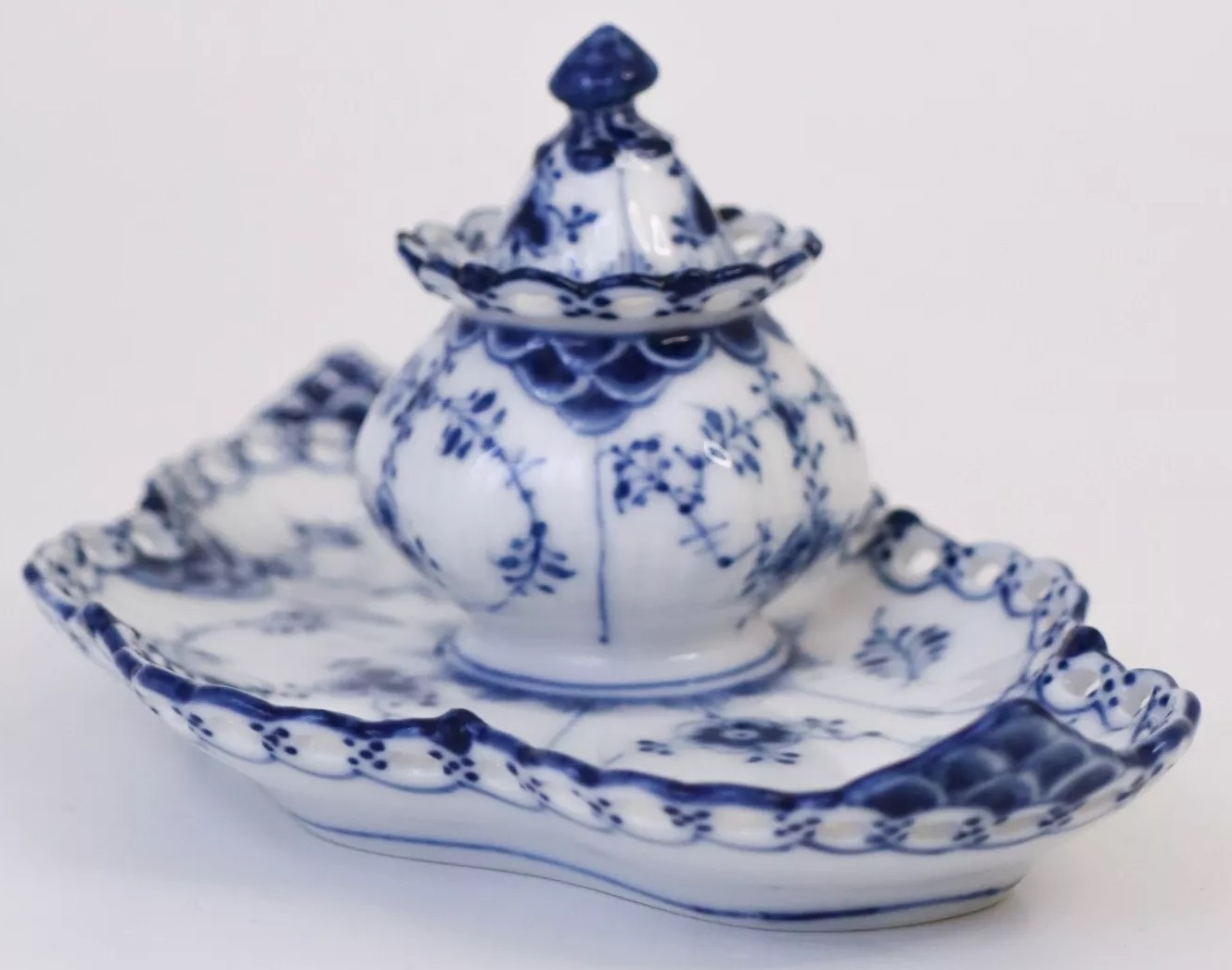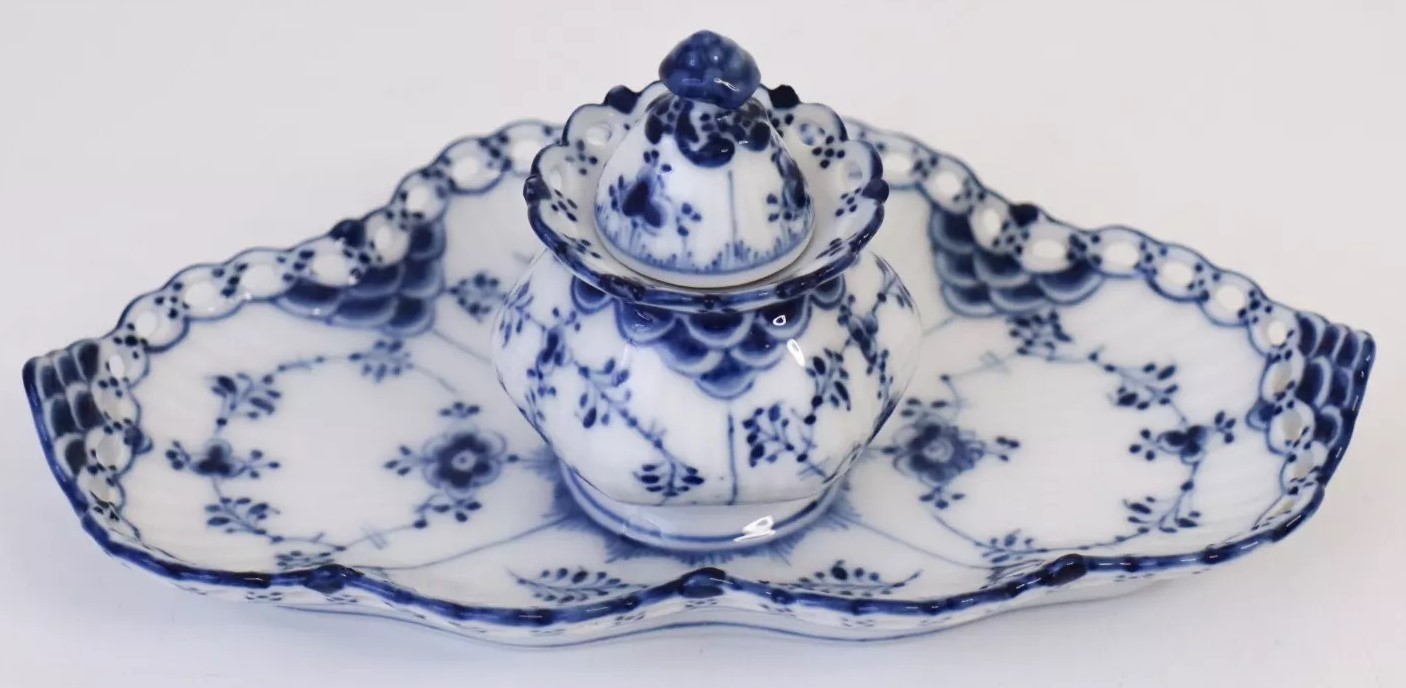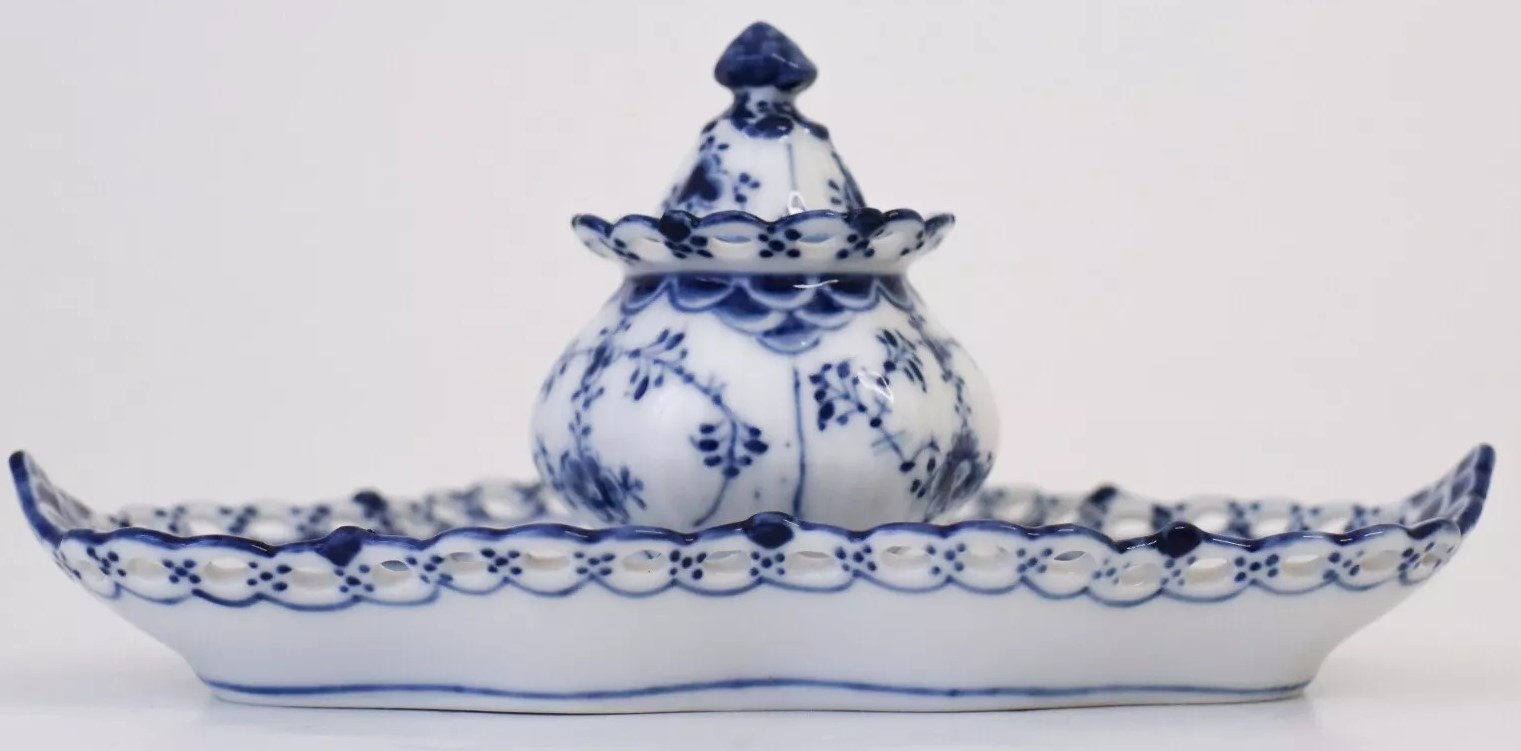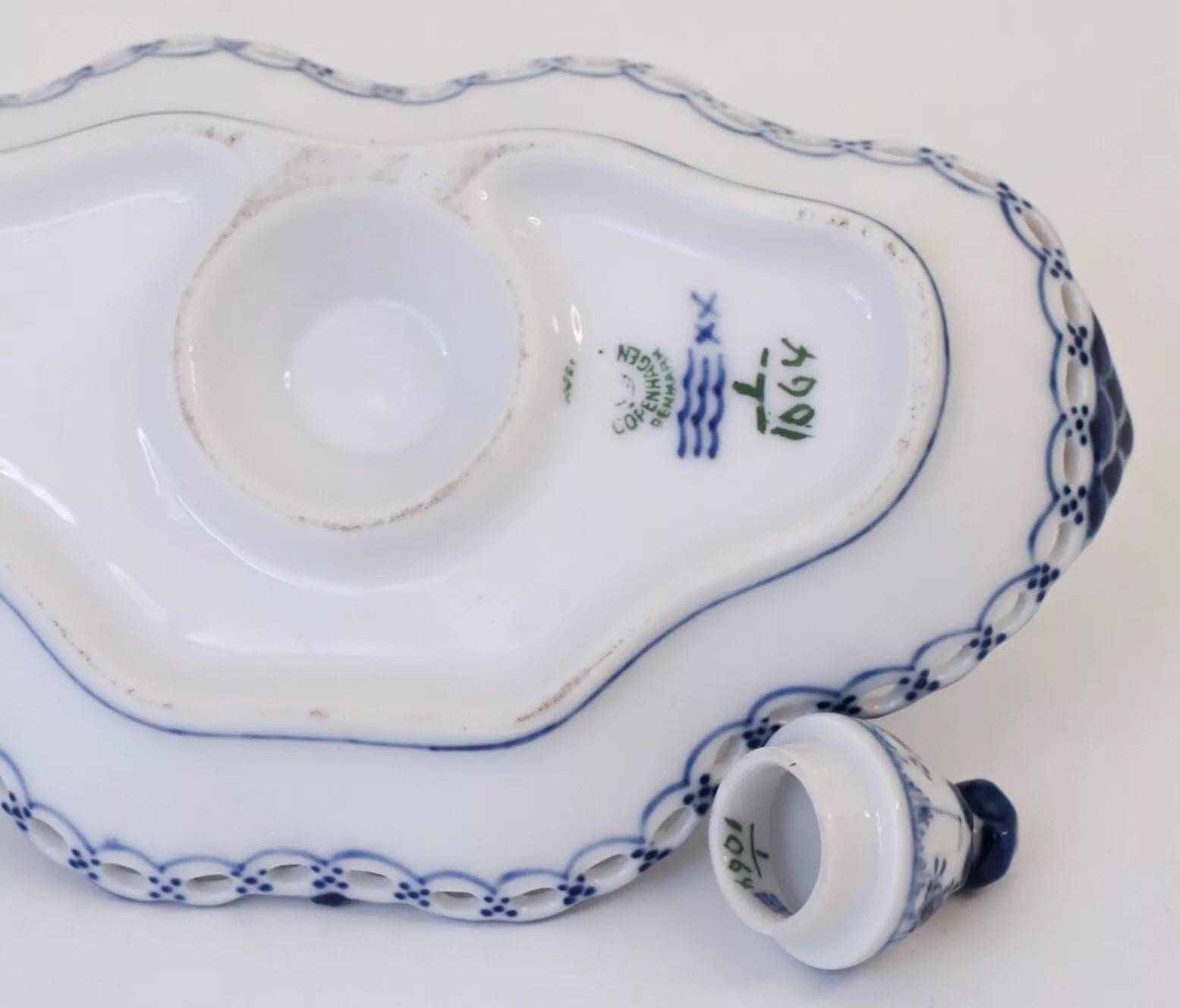
Royal Copenhagen Inkstand
| Categories | Ceramics/Porcelain "Named" Makers |
| Material | Porcelain |
| Markings | See narrative |
| Manufacturer | Royal Copenhagen |
| Origin | Denmark |
| Date or Era | 1884 - 1900 |
| Measuring | 6 ¾” long; 4” high |
This blue fluted Royal Copenhagen full lace inkwell features intricate lace patterns along the edges and delicate floral designs across its surface. The inkwell has a lid with a small handle on top and is placed on an attached tray with scalloped edges, showcasing the detailed and delicate design typical of Royal Copenhagen.
The blue fluted pattern, also known as “Musselmalet,” was first created in 1775. The full lace variant, with its elaborate hand-pierced lace borders, was revised in 1885 by Artistic Director Arnold Krog. The piece is numbered #1064.
Royal Copenhagen, officially known as the Royal Porcelain Factory, was founded in Copenhagen in 1775 under the protection of Danish Dowager Queen Juliane Marie. Chemist Frantz Heinrich Müller, granted a 50-year monopoly, established the factory. Although royal patronage wasn’t initially official, the first pieces produced were dining services for the royal family. The iconic “Musselmalet” or “Blue Fluted” pattern emerged from this legacy. The factory’s hallmark—a trio of wavy lines—symbolizes Denmark’s three waterways: Storebælt, Lillebælt, and Øresund.
Sold for $640 in August 2024
Content disclaimer. The information posted is the owner’s best knowledge and may not have been vetted by the SOIC. We welcome comments, corrections, and additions, working to make our website information comprehensive and accurate.
Join the Society of Inkwell Collectors (SOIC) – it’s free!
Founded in 1981 as a non-profit organization,
we are documenting inkwells (and accessories).
We’re here to help and inform!
